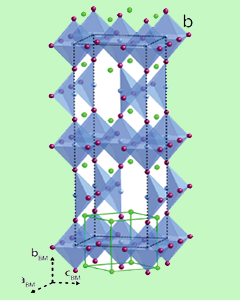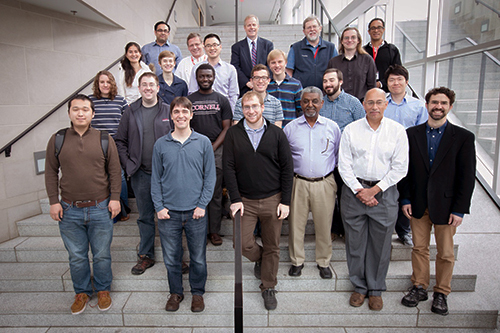X-RAY RUNS: Apply for Beamtime
2017 Nov 1 - Dec 21
2018 Feb 7 - Apr 3
2018 Proposal/BTR deadline: 12/1/17
2018 Apr 11 - Jun 4
2018 Proposal/BTR deadline: 2/1/18

Six summer science workshops at CHESS followed a most memorable Users’ Meeting on June 7th when our user community first heard the big news about plans to reconfigure the accelerator and beamlines to use only a single source of particles. This will involve relocating the five experimental stations on the A, B, C, and D beamlines, and upgrading the replacement stations with independently tunable high-flux undulator sources. The goal of the workshops was to identify pressing and important scientific needs for a future high-energy x-ray source utilizing unique capabilities of the Cornell accelerator and special types of organization and user support.
This “thin-films” workshop was held on June 8th and involved 7 invited speakers and 28 attendees. In addition, 25 remote viewers asked questions and participated in discussions through the on-line YouTube stream. The organizing committee consisted of Arthur Woll (CHESS) and Charles R. “Chip” Eddy (Naval Research Lab). This workshop sought to bring together leaders in both thin-film technologies and synchrotron science to discuss the role synchrotron science can and should play in helping advance thin-film technologies. The field is expanding rapidly, as seen in new interests and investment in high-K dielectrics, III-V nitride semiconductors, complex oxides, and two-dimensional material systems. Accelerating progress in these technologies will require improved capabilities in thin-film growth process, post-growth processing and material characterization, as well as improved and more general access to these techniques.
The full agenda for the workshop with speakers’ names and presentation titles and abstracts are available online here: http://meetings.chess.cornell.edu/sciworkshops2016/Workshop3.html
Kyle Shen (Cornell) opened the workshop noting that, in recent years, the study of heterointerfaces between electronic materials has emerged as a new frontier in materials research. In particular, significant effort has been invested in studying emergent electronic states at the interface between oxides, including heterostructures of 2D van der Waals materials, such as graphene, BN, and MoS2 have been intensively studied. Over the past 2 years, one particular 2D / oxide heterostructure has been investigated intensively for the possibility of enhanced interfacial superconductivity: monolayer FeSe grown on SrTiO3, where SC has now been detected above 100 K. This startling discovery has radically altered our notions of what is achievable at monolayer interfaces. However, the atomic structure of the FeSe / SrTiO3 interface, and indeed nearly all atomically thin materials, is largely unknown.
Other topics of the workshop ranged over the need to capture and understand in-situ growth and processing, in-situ photocathode life-cycle studies, challenges of hard x-ray spectroscopies during in-situ growth, and metrology of devices with features below the 10 nanometer technology node. Discussions also centered on the launch in 2015 of the NSF Materials Innovation Platform program, and how recently funded centers at Cornell and Penn State will be engineering new materials and heterostructures, but that neither program site houses capabilities to routinely ascertain the crystal structure of such atomically thin materials and interfaces.
Upgrades to CHESS that would greatly benefit thin-film studies include (1) providing high-flux, tightly focused beams necessary to work on ultra-thin atomic layer systems utilizing short exposure times (high growth rates), and (2) using high-energy x-rays to penetrate specimen chambers and “vacuum suitcases” needed to transport specimens from remote synthesis facilities, and (3) utilizing high energy x-rays – e.g. 40-70 keV – for rapid structural characterization and/or phase diagram studies as a function of temperature or environmental conditions. This approach would exploit CHESS’s source as well as vast improvements in large area 2D detection in this energy range.
After the meeting, CHESS scientists, organizers and participants joined forces to summarize notes and compose “white papers,” capturing the scientific need and opportunities for innovative work using an upgraded CHESS source. CHESS scientists are now working with members of the CHESS External Advisory Committee and members of the CHESS Users’ Executive Committee to refine combine, reduce and/or sharpen the ideas captured from the workshops. The CHESS staff is enormously grateful to members of the user community and beyond who’ve helped shape the future of CHESS.
Stay tuned to the CHESS eNewsletter to hear exciting updates on the CHESS-U upgrade.

Some of the participants at Workshop 3 in the Physical Sciences Building.
Submitted by:
Ernest Fontes, CHESS, Cornell University
07/13/2016
